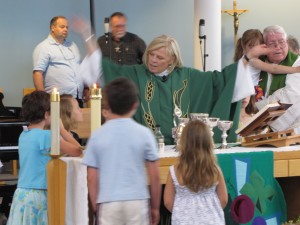Dietrich von Hildebrand and Our Relativistic Age
German theologian and philosopher Dietrich von Hildebrand is pictured in a 1939 photo. (CNS photo/George Baltus, courtesy of Dietrich von Hildebrand Legacy Project)
Postmodern relativism and deconstruction have produced, at the popular level, what I have termed the “Meh culture,” that is to say, a culture dominated by the “whatever” attitude, a bland, detached indifferentism to the good and the true. How often have you heard someone say, “That’s perhaps true for you but not for me,” or, “Who are you to be imposing your values on me?” or in the immortal words of the Dude in The Big Lebowski, “Well, that’s just like your opinion, man.” Is it not a commonplace today that the only moral absolute that remains is the obligation to tolerate all points of view? What this subjectivism has conduced toward is a society lacking in energy and focus, one that cannot rouse itself to corporate action on behalf of some universal good. John Henry Newman said that well-defined banks are precisely what give verve and direction to a river. Once those banks are knocked down, the river will spread out, in short order, into a large, lazy lake. Applying the analogy, he argued that objective truths, clearly understood, are what give energy to a culture and that when those truths are compromised in the name of freedom or toleration, said culture rapidly loses its purpose and cohesiveness. It is as though people today are floating on individual air-mattresses on Newman’s lazy lake, disconnected from one another, each locked in the isolation of his or her subjective judgments.
The great 20th-century philosopher Dietrich von Hildebrand was one of the most articulate and incisive critics of the kind of relativism that has come to hold sway in our time. Following the prompts of both Plato and St. Augustine, Hildebrand delighted in showing the self-defeating incoherence of the position: if he is to be consistent, the relativist must hold that the claim of universal relativism is itself relative and hence not binding on anyone beside himself. Hildebrand taught that the philosophy of relativism flowed from the failure to honor the fundamental distinction between the arena of the merely subjectively satisfying and the arena of real values. There are many things and experiences that we seek because they please us or satisfy some basic need. One might find a cigarette appealing or a slice of pizza tasty or a political party useful, but in all these cases, one is bending the thing in question to his subjectivity. But there are other goods (Hildebrand’s “values”) that by their splendor, excellence, and intrinsic worth, draw the person out of himself, bending his subjectivity to them, drawing him toward self-transcendence.
In the presence of Beethoven’s Ninth Symphony or Chartres Cathedral or Plato’s Republic or the daily work of the Missionaries of Charity in Calcutta, one is compelled to acknowledge the preciousness of a reality that goes beyond the needs or expectation of one’s ego. To characterize such things as merely subjectively satisfying, as though appreciating them is simply a matter of individual taste, would be simply ludicrous. The whole point of the moral life for Hildebrand is to cultivate the appropriate response to these objective values, to channel one’s energies according to their demands. A crucial consequence of cultivating the proper response to values is that real community increases and intensifies. Whereas the merely subjectively satisfying correlates to the individual and his particular preferences, the objectively valuable correlates to the entire society of those drawn out of themselves and into a shared devotion.
One might be tempted to think, “so far so abstract.” But a new book titled My Battle Against Hitler, edited by two of the most devoted Hildebrandians on the scene today, John Crosby and his son John Henry Crosby, vividly demonstrates how Hildebrand himself lived out the principles of his moral philosophy in the face of the most vicious ideology of the last century. In the 1920s, as the National Socialist movement was gaining ground, Hildebrand, a professor of moral philosophy at the University of Munich, commenced to speak out against Hitler and his cronies. He saw Nazism—marked by anti-Semitism, crude nationalism, cruelty, and indifference to human dignity—as a repudiation of an entire range of objective values. Though it put his career and eventually his very life at risk, Hildebrand became, accordingly, an impassioned opponent of this political movement which had begun to attract the support even of leading intellectuals. When Hitler came to power in 1933, Hildebrand was compelled to leave his beloved Munich and take up residence in Vienna. From 1933 to 1938, he continued vocally to oppose Hitler, founding and editing an anti-Nazi journal that so infuriated Hitler that the Fuhrer referred to Hildebrand as his “number one enemy.” When the German annexation of Austria took place, Hildebrand was aggressively sought by the Gestapo and narrowly escaped with his life, eventually settling in New York, where he became professor of philosophy at Fordham University.
A key concomitant of the assertion of objective value is the claim that objective disvalues exist as well. And just as we should cultivate a response of love and appreciation to value, we should cultivate a response of hatred and opposition to wickedness. Hildebrand saw that indifference to evil is as destructive as indifference to good. In our relativistic age, when we are confronted with a whole range of disvalues in our society, Hildebrand’s is a voice we need to heed.












